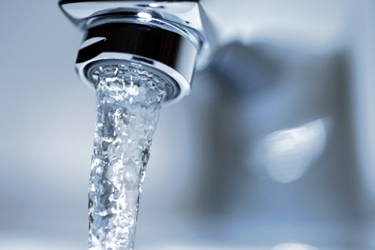HAAs In The EU: Monitoring For Haloacetic Acids Under The Drinking Water Directive

By Kevin Westerling,
@KevinOnWater

As of January 12, 2026, monitoring of haloacetic acids (HAAs) in drinking water — disinfection byproducts that form when chlorine reacts with organic matter during water treatment — will become mandatory across the EU under the Drinking Water Directive (2020/2184), which sets a total limit for HAAs.
“This is one of the most significant updates to EU drinking water monitoring in recent years,” notes Dr. Elke Süss, Application Specialist in Ion Chromatography at measuring instrument supplier Metrohm. “While large labs are preparing for the new requirements, smaller facilities are waiting for an official European method. Yet the deadline is fixed, so readiness and reliable analytics will be essential.”
In the following Q&A, Süss provides a crash course on HAAs, the EU Directive, and how best to prepare for and comply with the mandate.
What are haloacetic acids?
Haloacetic acids (HAAs) are a group of organic acids which can be found as disinfection byproducts (DBPs) in chlorinated drinking water. Structurally, they are similar to acetic acid, but with one or more hydrogen atoms in the methyl group replaced by a halogen atom (fluorine, chlorine, bromine, or iodine).
Haloacetic acid can form when chlorine, used to disinfect drinking water, reacts with naturally occurring organic matter. Because HAAs are highly chemically stable, they can accumulate in the water. This accumulation is a concern because long-term exposure to HAAs may pose health risks.
What are HAA5 and HAA9?
HAA5 refers to the five HAAs most commonly found in drinking water: monochloroacetic acid (MCA), monobromoacetic acid (MBA), dichloroacetic acid (DCA), dibromoacetic acid (DBA), and trichloroacetic acid (TCA). These five haloacetic acids are required to be monitored under the EU directive 2020/2184.
HAA9 includes the five regulated acids plus four additional ones: bromochloracetic acid (BCA), bromodichloracetic acid (BDCA), chlorodibromoacetic acid (CDBA), and tribromoacetic acid (TBA). Currently, these four additional haloacetic acids are not regulated but are considered more toxic than the HAA5 compounds.
What does the EU directive 2020/2184 stipulate?
By January 12, 2026, all EU member states must ensure that their drinking water meets specified levels for certain disinfection byproducts, including haloacetic acids, as well as other contaminants. Specifically, the directive set a maximum concentration of 60 micrograms per liter (µg/L) for the HAA5 in drinking water. This requirement applies in cases where water disinfection methods are used that can produce HAAs.
Why are haloacetic acids a concern for drinking water safety? What risks are associated with chronic exposure?
HAAs are disinfection byproducts (DBPs) that form when chlorine or other disinfectants react with natural organic matter in drinking water. HAAs are persistent, water-soluble, and nonvolatile, meaning they remain in treated water and can accumulate over time.
The U.S. National Toxicology Program classifies six HAAs (dichloroacetic acid, dibromoacetic acid, bromochloroacetic acid, bromodichloroacetic acid, chlorodibromoacetic acid, and tribromoacetic acid) as “reasonably anticipated to be human carcinogens.” This classification is based on evidence from animal studies and research showing that these chemicals can cause oxidative stress, DNA damage, and changes in gene regulation — mechanisms linked to cancer development.
In animal studies, lifetime exposure to certain HAAs has led to dose-related increases in liver tumors, malignant mesothelioma, mammary gland tumors, and intestinal adenomas.
Brominated haloacetic acids tend to be more potent than chlorinated HAAs as they are more likely to cause genotoxicity and oxidative stress.
Other chronic effects:
- Liver toxicity: HAAs can disrupt mitochondrial function and energy metabolism, leading to oxidative stress.
- Neurological disorders: Experimental studies have found that certain HAAs are associated with neurotoxicity.
- Endocrine and metabolic effects: Evidence suggests that some HAAs interfere with enzyme systems (for example, glutathione S-transferase zeta), which may amplify oxidative damage.
Exposure pathways:
- Beverages: Via drinking water and beverages prepared with chlorinated water.
- Swimming pools: Concentrations are higher than in tap water; accidental swallowing of pool water is the main exposure route.
- Food: Vegetables and processed foods washed or cooked in chlorinated water can contain HAAs.
How does standardizing HAA monitoring improve long-term health protection for EU citizens?
With global warming, water temperatures can increase, leading to stronger bacterial growth. Therefore, it might become necessary to chlorinate drinking water that previously did not need such treatment. This, in turn, can lead to increased levels of disinfection byproducts, such as HAAs, in drinking water.
